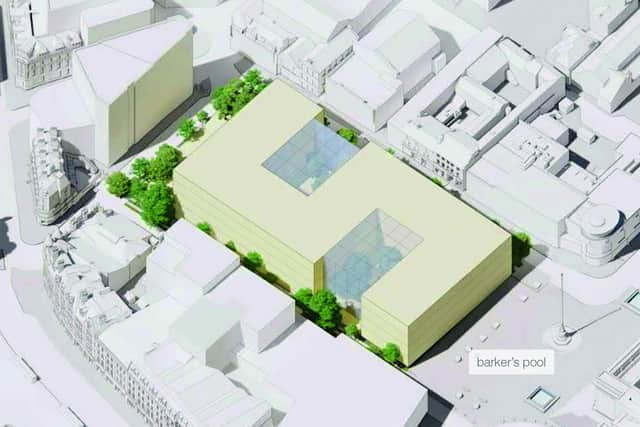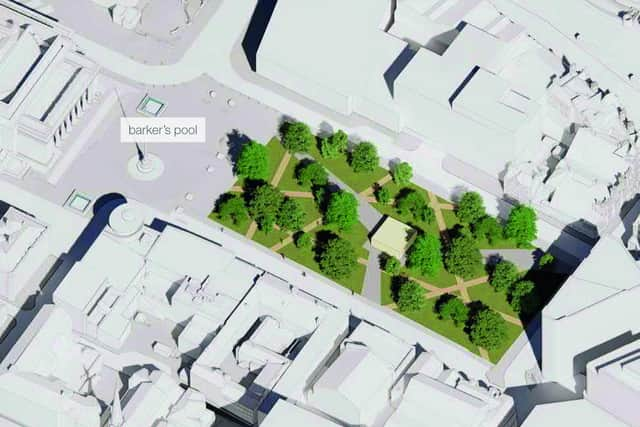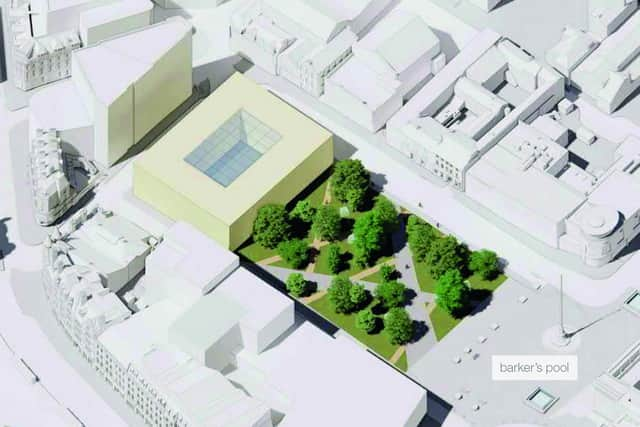These are the three options for Sheffield's John Lewis building that everyone in the city is asked to comment on
and live on Freeview channel 276
A major consultation on the future of the city centre has been launched this week.
Sheffield Council’s City Centre strategic vision outlines significant improvements at three key city centre sites, including Fargate and High Street, Castlegate and John Lewis.
Advertisement
Hide AdAdvertisement
Hide AdThe council is asking the public to comment on three possible ways forward for the former Cole Brothers building at Barker’s Pool, the subject of much debate since John Lewis backed out of a 20 year lease and shut for good last year.


The department store was planned to be central to the Heart of the City regeneration scheme, but after the the retailer decided to quit and paid Sheffield Council £5 million in compensation, the building is now under the council’s control.
This week, the council has laid out three broad options for the future of the site: retain and reuse the existing building, demolish the building and create a large public space, or demolish the building and create a public space with a smaller building.
While many ideas have been floated for the unit’s future use, and plans to create a football museum there were revealed last year, none of these are mentioned.
Advertisement
Hide AdAdvertisement
Hide AdThe benefits and challenges of each broad option have been detailed.


The document says retaining the building would mean keeping a site with strong heritage value, the carbon used to build the site would stay inside the building, and it could be converted for residential, office, or other uses.
However, this is the most expensive option, the building has high levels of asbestos, a great deal of work would be required to repurpose the building, and the car park may still need to be demolished. A previous report suggested it could cost £70m.
Replacing the building with a public space would improve pedestrian and cycling accessibility, a large park would likely improve biodiversity and contribute to low emissions, and this option requires the least capital investment.
Advertisement
Hide AdAdvertisement
Hide AdThe main drawback of this option is the economic potential of such a central site would not be realised. There would also be a need for management to prevent anti-social behaviour. A previous report suggested this would cost up to £15m.


The final option of replacing the former John Lewis store with a smaller building would be advantageous because it would be in tune with the type of sites that current retailers want. This option would also leave room for some public space, and a new building could be carbon neutral.
Major challenges here are that this option would take the longest to complete, and construction will be challenging due to the Heart of the City.
The report says Castlegate is set to become an ‘exciting, thriving new neighbourhood’, with plans to uncover the River Sheaf, extend the Grey to Green scheme and development of land at the former Castle Market.
Advertisement
Hide AdAdvertisement
Hide AdAt Fargate, Events Central will be established to provide space for start-ups and small technology businesses, enabling the full use of the whole building and helping to bring new life to Fargate.
See tomorrow’s Sheffield Telegraph for a special report on the city centre consultation.
